There are many wildlife rescue centers in Costa Rica and choosing which to visit isn’t always easy. If you want to pick a place that treats the animals in an ethical, respecting way and doesn’t do it for the profit, the choice becomes even harder.
There are literally hundreds of wildlife rescue centers in Costa Rica. In a land with such a rich biodiversity and a range of animals they actually become essential. Unfortunately, all of them don’t do the work without trying to profit from the animals, and they’re really missing the point. A wildlife rescue is about helping the animals, not trying to make money out of them.
Why Visiting a Smaller Wildlife Rescue Center Is Better Than a Big, Commercial one?
Sometimes the story goes that the more paying visitors are coming in, the more greedy places might become. On many occasions, the rescue centers with relatively small entrance fees come across as better places. Then you may rely more on the fact that your money actually goes straight to the animals’ benefit for 100%. Most of the times the best places are also almost entirely voluntary based.
In small centers, the staff has enough time to take care each of the animals the best way possible. They can consider them as individuals. Most important of all, their primary purpose is always to treat the animal back into such a health that it can be released back into the wild, as soon as possible.
Big places, on the other hand, tend to be more like a circus. The animals have often been put into too small cages, as to have as many animals around as possible. Unfortunately, in many cases this just results that the animals are no longer taking cared of properly, the center’s employees not having enough time anymore. Also in the worst case scenarios, the animals aren’t even released back to the wild because the place may earn too much money from having them around. This is where it really gets twisted. Sometimes you can’t be sure anymore – is it a zoo or a rescue center?
You can also tell a lot of the place about how the animals seem to get on in their surroundings. Do they seem happy or do they seem depressed and anxious? Just observing the animals a bit more carefully will tell you a lot. You can see it from their behavior if they are not treated right.
Tree of Life Wildlife Rescue Center or The Sloth Sanctuary?
There is only one correct answer to this question: choose Tree of Life Wildlife Rescue Center!
Many of the reasons I told you above, apply here, to the benefit of the Tree of Life. I encourage doing a bit of searching around the web of your own, but some of the things you’ll likely find out about the Sloth Sanctuary may not be pretty. They may have once been a good rehabilitation place for injured sloths, but unfortunately, it doesn’t seem to be anymore. Quite pricey entrance fee (25 USD/person) doesn’t seem justified when many of the animals live in small cages without enough natural stimulus. We drove past the place, saw the small cages and it made us sad. Business should never run over the welfare of the animals.
Instead, in the Tree of Life Wildlife Sanctuary, the entrance fee is smaller (about 10 USD/person) and the place runs mostly by donation money. It’s a relatively small place, but there are a lot of different animals to see. Tree of Life doesn’t have a media circus around them, nor it is so massively visited. You can spend as much time over there as you like, without crowds around you. The animals have quite large cages decorated like their natural habitat and most of the times there will also be sloths. Most important of all – the animals seemed happy and not stressed.
However, there’s a section for animals who have just recently arrived at the rescue center and are still more sick. These animals’ behavior seemed a lot more distressed, despite their quite good captive conditions, but it’s entirely understandable. In general, the animals appeared to be taken care of really well and looked very active and quite happy.
Especially the two sloths that we met were extremely active ones. They were just about to be released back into the wild and were climbing all over their big cage, decorated with many branches for them to hang onto. They were very social and curious fellows as well. Both of them came to see us at close hand and posed willingly for our lenses.
Encounter New Species in Tree of Life Wildlife Sanctuary
We met an animal of which we didn’t have even heard of before. It was a small cat species called Jaguarundi. It looked like a dark brown jaguar, but like a mini version. It was quite flashy, too. Showed us its teeth and ran around its cage like attacking and running away at the same time.
We also saw many other animals for the first time at Tree of Life, like different kind of monkey species and a blind kinkajou, one of the few permanent residents of the rescue center. Their purpose is always to return the animals back into the wild and only in some rare cases that is impossible. Then they’ll stay at the rescue center. Impossible to release was the case of the kinkajou – being blind it wouldn’t have survived in the wild.
We ended up spending quite a long time at the rescue center, photographing and watching the animals. Walking around and enjoying its tranquil atmosphere. There were only a few other visitors besides us, and we got to explore the place almost solemnly.
Tree of Life left a great feeling in general because it seemed to be very well operated and their focus was where it should be – on the animals’ welfare. It’s located a short drive (or walk) away from the center of Cahuita.
Simply put, the Tree of Life Wildlife Rescue Center is the place to go, if you want to see a broad range of animals and at the same time support their rehabilitation and welfare in a responsible and sustainable way.
Little Facts and How to Get to Tree of Life Wildlife Sanctuary
Tree of Life is founded in 2008, and they have a volunteer program as well as a breeding program for turtles and iguanas, where they’ll reintroduce them into the wild and to their natural habitat.
In addition to all the animals, there’s a great botanical garden with many types of plants.
There are many ways to get to Cahuita from San José. Daily buses depart from the Terminal del Caribe and take about 3,5 hours. By car, it takes 3,5-4,5 hours, depending on the traffic. There are also vans and shuttles driving the route.
From Limón, you can take a one-hour bus ride, and they’re departing hourly from 5 AM to 6 PM from Radio Casino.
Don’t miss a visit to this great wildlife rescue center!
You May Also Like to Read:
The Mighty Murchison Falls and its National Park in Uganda
Murchison Falls National Park has versatile biodiversity and many animals. Cruise on the Nile river and visit its great, namesake falls.
Visit Serengeti in March for Baby Animals and Predators in Action
Serengeti is one of the best places on earth to witness the ancient drama of prey and predator. In March, the migrating wildebeests make the big cats reckless.
Visiting A Cigar Factory In Estelí, Nicaragua
Visiting a cigar factory in Nicaragua is an interesting experience. You'll see the cigar making process from start to finish in the cigar factory tour.




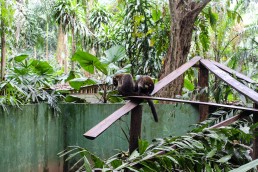
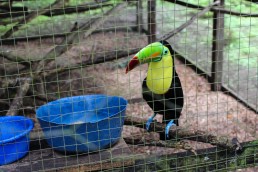
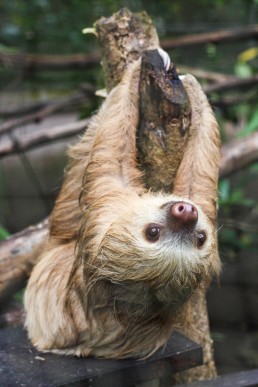
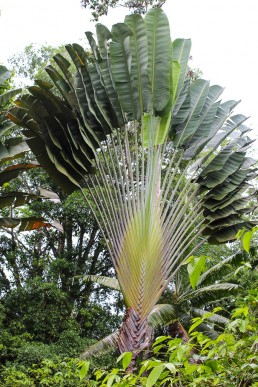

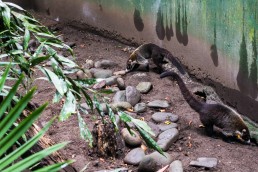

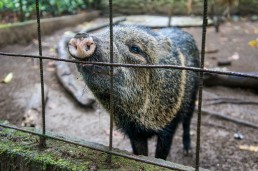
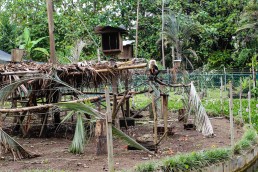



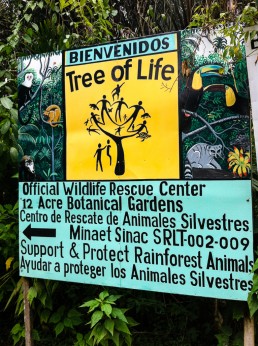




Thanks so much for the reviews. we are going to Cosa Rica from UK and we won’t visit zoos because of ethical reasons but are keen for our 5 year old son to have a close encounter and learn about the precious wildlife in Cosa Rica. Your review is really helpful as we would like to visit a true rescue centre and support it with a donation but don’t want to support anywhere which isn’t actively trying to release animals where appropriate and the animals are in small cages. Thanks for such a helpful article.
Hi Claire, and thanks so much for your comments. I’m happy that you found my article helpful. Tree of Life was such a beautiful place and they seemed to treat the animals the best way possible. And what most important, they actively tried to release them back into the wild. I hope you will have a great trip to Costa Rica! And please, stop by sometime to tell how was your visit to Tree of Life, I’d love to hear.
Is it wrong to want to have a Sloth climb on me, after seeing these pics?
My husband and I own a veterinary hospital – he is veterinarian and I am an animal behavior consultant. We have both worked with animals and animal welfare (including exotic animals) for over 20 years, so I’d like to think we aren’t naive about these kinds of things. We recently toured both the Tree of Life and Sloth Sanctuary and found that both organizations seemed to really care about what they were doing, and we really did not see anything that seriously concerned us, even during the “Insiders Tour” of Sloth Sanctuary, which includes a tour of the hospital facilities. Yes, there were a few things at BOTH places that we’d like to see done a little differently. Yes, there are some sloths in smaller cages at the Sanctuary, but this is one example of practical limitations and funding, and it appeared to be only a short-term solution for animals needing care. We were both convinced that they do the best they can to rehab & re-release the animals, and were quite impressed with the tracking and research that they do. The few permanent residents there did seem to be in reasonable enclosures, especially for such slow-moving, solitary creatures. We liked Tree of Life also, but found the educational opportunities to be less, and less supervision of humans around the exotic animals, and suspect that they probably rehab fewer animals than the Sanctuary.
We have both learned, after 20 years of working with rescue groups even in the United States, most do the best they can with limited funds and staffing. It makes both of us sad when those of us who should be working together to help animals spend valuable resources arguing among each other. It happens with pet rescues, and apparently, wildlife rescues aren’t immune to this. It seems to me that the big difference, and perhaps the reason for the higher fees at the Sloth Sanctuary is so that they can pay for the medical care and research they do to help the sloths long-term – their medical facilities, for a Costa Rican animal rescue organization, are impressive.
I’m curious about something you said in the blog – you drove by the Sloth Sanctuary, but have you actually visited the place? I really hope that your opinion of them is based on more than just driving by – that’s a little unfair.
Hi Lorin,
and thank you for your comments. It was interesting to read your opinion as a professional to this matter. I appreciate you taking the time to read our post and comment to it. I wholly agree to what you said about that all rescue centers should be working together to help animals instead of spending the valuable resources arguing among each other. Though I believe that in the case of the Sloth Sanctuary and the Tree of Life there aren’t any arguing going on. I hope not.
We did not, in matter of fact, visit the Sloth Sanctuary, which was a conscious choice we made (like I told in the post). You can find surprisingly much information from the internet if you do enough background searching. In this case we did much searching, and in addition to that, after reading also many comments and opinions from fellow travelers who’ve visited the place, we decided that it ultimately didn’t seem to be that kind of place which we’d have wanted to support. Every place is responsible for the reputation they present to the outside world of themselves, by themselves. Based on that reputation and image presented, people will make conclusions and decisions. Therefore, in my opinion, it’s not unfair to have and express an opinion of something without personally experiencing thoroughly the particular thing.
I’m glad to hear that the medical facilities were great at the Sloth Sanctuary. But when it comes to the small cages, etc., I find it a bit hard to believe that it’d be only a matter of practical limitations and funding. After all, they do have a quite high entrance fee and without a doubt they receive a great number of visitors. Thanks to that own show of theirs at Animal Planet, for example. Maybe they could also invest a bigger part of that income to the bigger cages/basic requirements before all the research/tracking (even though that’s important, too)? Also which bothered me and seemed a bit strange was the fact that the Sloth Sanctuary has ended their volunteering program. You should think that volunteer workers (i.e. free employees who actually pay for the privilege to be a volunteer worker) would be a good solution and a welcoming aid for a rescue center? For ending such a profitable source of income, there must’ve been a reason. Makes you wonder about what the reason might’ve been? (And I say profitable because I believe that there would’ve been many people willing to go volunteer at the Sloth Sanctuary, again because of all the publicity they’ve had.)
We made the choice then, to support the place which seemed to us, more open, transparent and better. We also thought that being a smaller, not so famous rescue center yet with nice reputation, the Tree Of Life needed our support more than the Sloth Sanctuary. We also wouldn’t have had the time to visit them both. Tree Of Life may rehab fewer animals than the Sloth Sanctuary, but that exactly, I believe, depends mostly on the economic differences of these places. I believe Tree Of Life don’t have as much money to spend as the Sloth Sanctuary has. We enjoyed the Tree Of Life very much and therefore wanted to tell our opinions and views to our fellow travelers, too, so that maybe they could get more visitors and more funding for their work. Everyone will make their own decisions, based on their own judgement, of course.
I appreciate people like you, who work in the animal welfare. Keep up your good work and have a great Christmas!
I have volunteered at the Tree of Life for several years and this is the most informative and well written blogs I have read regarding it. It shows how much you enjoyed your visit and invites others to come. Thank you so much.
Hi Sue,
thank you very much for your comments. I’m happy to know that you liked the post and we’re glad that we can help to increase the awareness of this great place. It’s always a pleasure to support responsible places like this.
Beautiful pictures and a very nice article , Thank you so much for the support .
Very much appreciated, Gracias
Hi Patricia,
thanks so much for your comments! We’re glad that you liked the post and we’re happy that we can do something to support your great cause.
Enjoyed this post, Piritta. Tree of Life is run by such wonderful, caring people. It’s great that you’re helping to spread the word about them!
Thanks so much for your comments, Jenn! We absolutely loved this place, too. They do a great job! We’re glad that we can help to spread the info about them.